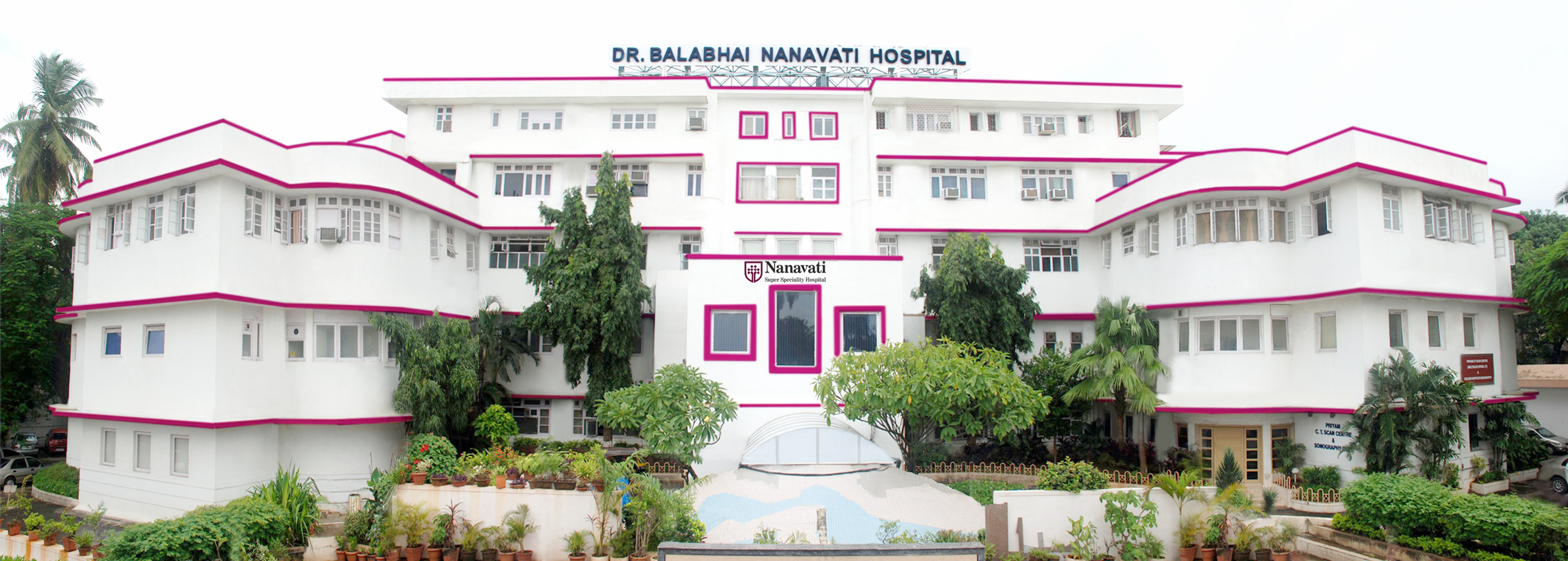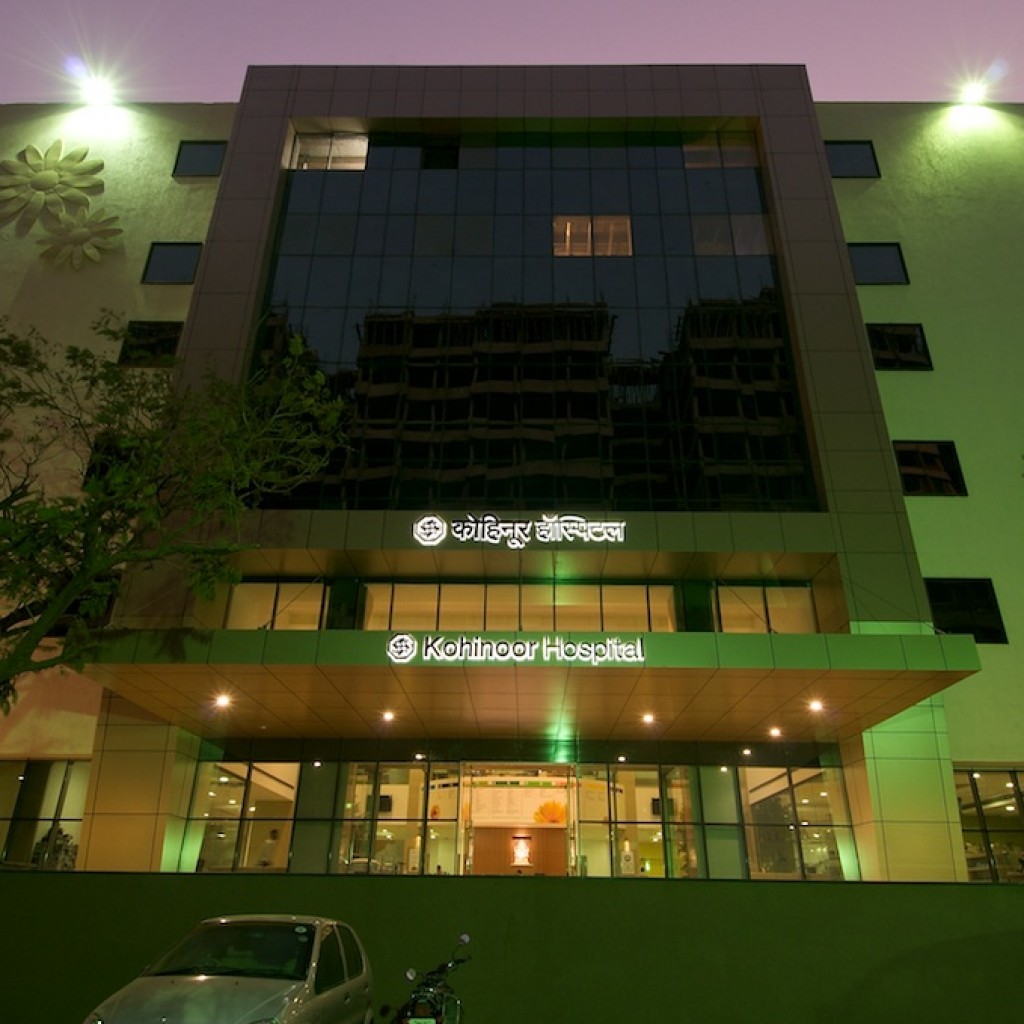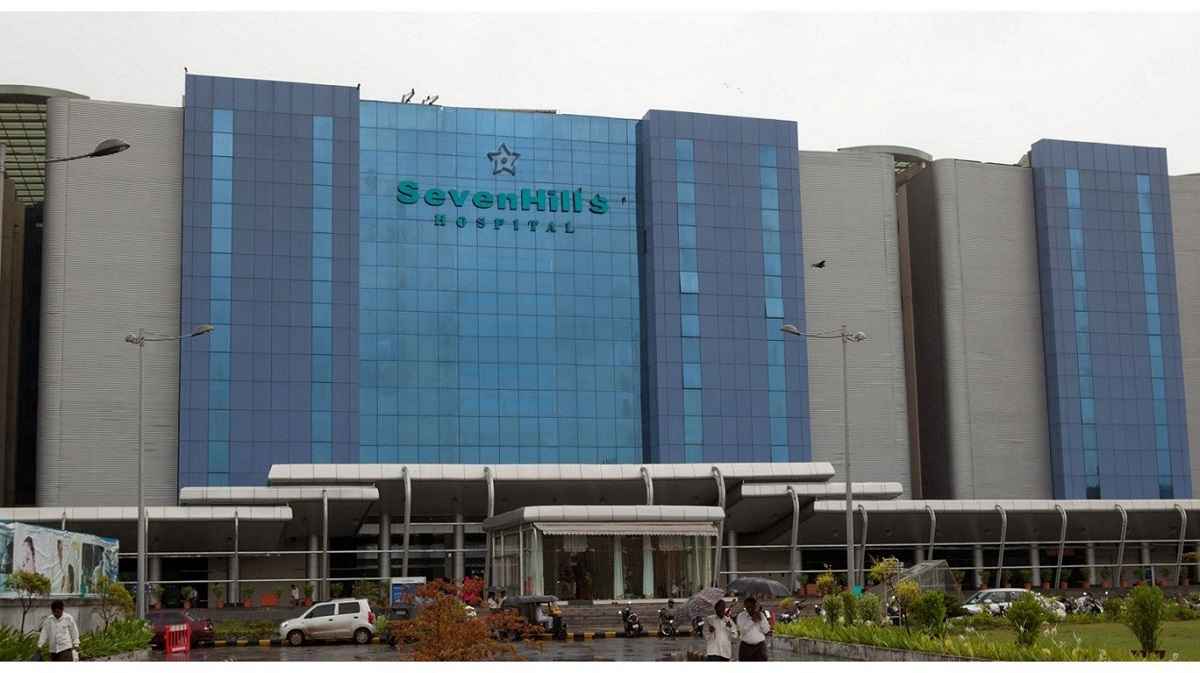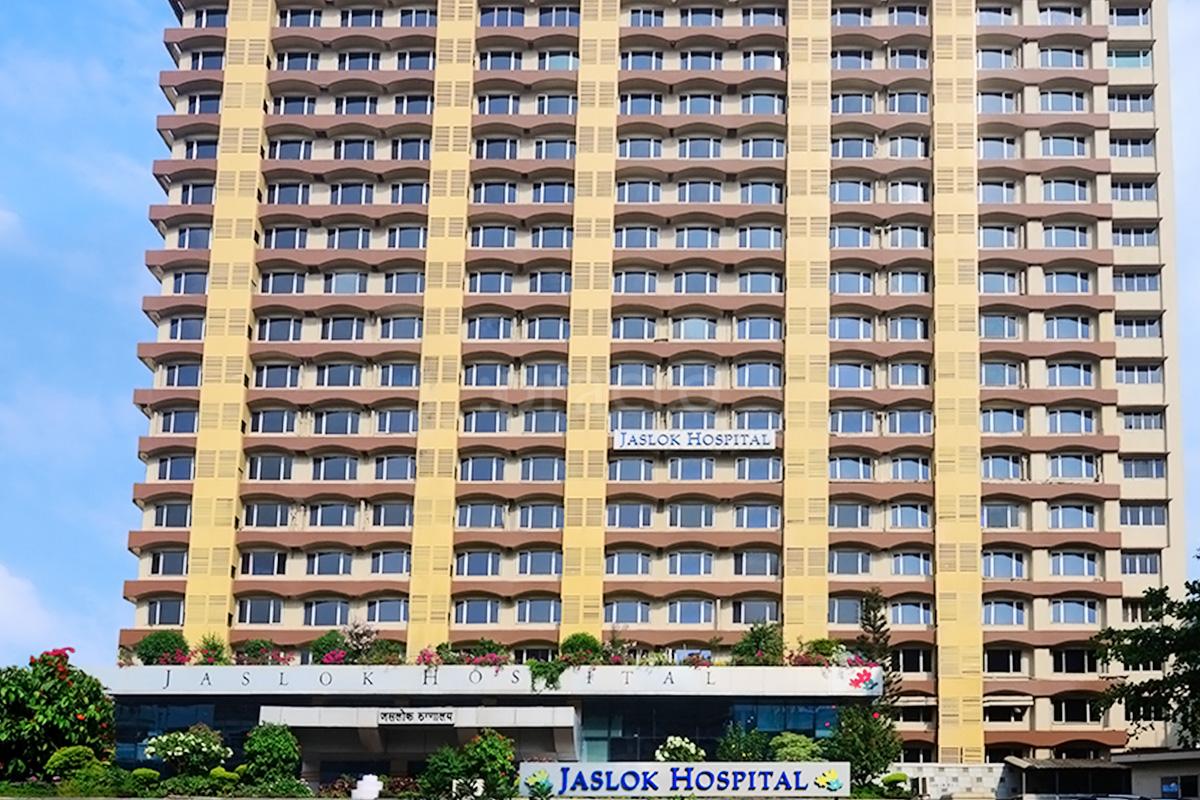Top 10 Best Sports Medicine Hospitals in Mumbai

Hospitals are where people can get medical care from doctors, nurses, and other medical professionals trained in health science. The most well-known type of hospital is the general hospital, which usually has an emergency room for people with sudden illnesses or injuries or who have been in an accident. Most of the time, a district hospital is a central place for health care.
It has many beds for intensive care and more for people needing long-term care. Specialized , medical centre include trauma centres, rehabilitation hospitals, hospitals for children, hospitals for seniors, and hospitals for specific medical needs like psychiatric treatment (see psychiatric hospital) and specific disease categories. Compared to general hospitals, specialized hospitals can help reduce the cost of health care. Depending on where their money comes from, hospitals are public, speciality, or government hospitals.
A teaching medical centre helps people and teaches health science and other health care students simultaneously. A clinic is usually a smaller place for health care than a hospital. Hospitals have many different departments, like surgery and emergency care, and specialized units, like cardiology. Some hospitals have outpatient units, and others have units for long-term care. A pharmacy, pathology, and radiology are all examples of standard support units.
Medical centres are usually paid for by the government, for-profit or not-for-profit health organizations, health insurance companies, charities, or direct donations to charities. In the past, religious orders or generous individuals and leaders often started and paid for hospitals.
Most medical centre are run by professional doctors, surgeons, nurses, and other health care workers. In the past, this work was usually done by members of the religious orders that started the hospitals or by volunteers. In the late 1990s, though, Catholic religious orders like the Alexians and the Bon Secours Sisters still focused on hospital ministry. Other Christian groups, like the Methodists and Lutherans, also ran hospitals. Hospitals were original “places of hospitality,” which is still reflected in the names of some institutions, such as the Royal Hospital Chelsea, which was founded in 1681 as a retirement and nursing home for veteran soldiers.
Etymology
In the US, a white H on a blue background was used to stand for a hospital.
During times of peace, there are many ways to show where hospitals are. In the United States, for example, a white “H” on a blue background is often used. According to the Geneva Conventions, a hospital may be marked with a red cross, red crescent, or red crystal during the war.
During the Middle Ages, hospitals were different from what they are today because they were also for the poor people, hostels for pilgrims, or hospital and schools. The word “hospital” derives from the Latin word “hospes,” which means a guest or a stranger. From this, the noun hospitium came to signify hospitality, which is the relationship between a guest and the person who takes care of them, as well as the friendliness and a warm welcome.
Through metonymy, the Latin word came to mean a room for guests, a place for guests to stay, or an inn. So, the English words host (where the p has been dropped to make it easier to say), hospitality, hospice, hostel, and hotel all come from the Latin word hosts. The modern word hôtel comes from the Latin word hostel, which took on a silent s. This letter was eventually taken out of the word, shown by a circumflex in the modern French word hôtel. The German word “Spital” comes from the same place.
Types
Some people go to a hospital for diagnosis, treatment, or therapy and then leave (“outpatients”) without staying overnight. Others are “admitted” and stay overnight or for several days, weeks, or months (“inpatients”). Hospitals are usually different from other medical facilities because they can take in patients and care for them. These smaller facilities are usually called clinics.
General and acute care
“General hospital” takes you to this page. See General Hospital for the American soap opera. A general medical centre, also called an acute-care hospital, is the most common type. These places treat a wide range of illnesses and injuries and usually have an emergency room or trauma centre for dealing with immediate and severe health problems. In bigger cities, there may be more than one hospital with different sizes and services. In addition, some hospitals in the United States and Canada have their ambulance service.
District
A district medical centre is usually the most important place for health care. This is because it has a lot of beds for intensive, critical, and long-term care.
In California, a “district hospital” is a type of health care facility made after World War II to help communities that didn’t have enough hospital beds.
District medical centres are the only public medical centres in 19 of California’s 58 counties. They are also the only hospital close to a local community in nine other counties where there are one or more other hospitals, but they are a long way away. In addition, district hospitals comprise 28 of the state’s rural hospitals and 20 of its critical-access hospitals.
They are set up by local governments, have boards from which the people in each community choose, and are there to meet local needs. They are an essential healthcare provider for people who don’t have insurance and those who have Medi-Cal, California’s Medicaid program for low-income people, some seniors, people with disabilities, foster children, and pregnant women. In California in 2012, $54 million worth of care was given for free by district hospitals.
A speciality hospital focuses on one or a few medical specialities that are related to each other. For example, rehabilitation medical centres, children’s hospitals, seniors (geriatric hospitals), long-term acute care facilities, and hospitals for specific medical needs like psychiatric problems (see psychiatric hospital), specific disease categories like cardiac, oncology, or orthopaedic problems, and so on, are all subtypes.
Fachkrankenhaus is the name for specialized hospitals in Germany. One example is Fachkrankenhaus Coswig (thoracic surgery). In India, speciality hospitals are called “super-speciality hospitals,” while hospitals with more than one speciality are called “multispecialty hospitals.”
Compared to general medical centres, specialized hospitals can help reduce the cost of health care. For example, Narayana Health’s cardiac unit in Bangalore specializes in heart surgery and can treat many more people. It has 3,000 beds and does 3,000 heart surgeries on children every year, which is the most of any hospital in the world.
In addition, surgeons are paid a fixed salary instead of getting paid per operation. This means that when the number of procedures increases, the hospital can use economies of scale to lower the cost per procedure. Each expert could also be more productive if they worked on one process at a time, like a production line.
Teaching
Jackson Memorial Hospital is the primary teaching medical centre for the University of Miami’s Leonard M. Miller School of Medicine. It is in Miami’s Health District and has 1,547 beds, making it the largest hospital in the United States.
McMaster University Medical Centre is a medical centre in Hamilton, Ontario, and a teaching hospital. A teaching hospital takes care of patients and trains people who want to be doctors or nurses, like medical students and student nurses. It may be connected to a medical school or nursing school and may be involved in medical research. Students can also see how doctors and nurses do their jobs in the medical centre.
Clinics usually only help outpatients, but some may have a few beds for people who need to stay overnight, and a small number of services are typically found in hospitals.
Departments or wards
After a trauma intervention, a bed in the resuscitation room shows the high-tech equipment of modern hospitals. A medical centre has one or more wards with beds for people who need to stay there. It may also have acute services like an emergency room, operating room, intensive care unit, and several medical speciality departments.
A well-equipped hospital could be called a trauma centre. They may also have services like a hospital pharmacy, radiology, pathology, and medical laboratories. Some hospitals have outpatient services like mental health care, dentistry, and rehabilitation.
A medical centre may also have a department of nursing, which is led by a chief nursing officer or director of nursing. This department is in charge of managing a professional nursing practice, nursing research, and hospital policies.
Many units have a medical director and a nursing director in charge of their fields within that unit. In an intensive care nursery, for example, the medical director is in order of the doctors and medical care, and the nursing manager is in charge of all the nurses and nursing care.
There may be a department for medical records, a department for releasing information, a department for technical support, a department for clinical engineering, and departments for facilities management, plant operations, dining services, and security.
Remote monitoring
Because of the COVID-19 pandemic, the British NHS started to use virtual wards. Patients are cared for at home. They can check their oxygen levels with an oxygen saturation probe and get help over the phone if needed. West Hertfordshire Hospitals NHS Trust took care of about 1200 patients at home from March to June 2020, and they planned to keep using the system after COVID-19, at first for respiratory patients.
In April 2020, Mersey Care NHS Foundation Trust began a service called COVID Oximetry Home. This lets them keep an eye on more than 5,000 patients at home every day. With this technology, nurses, caregivers, or patients can record and keep an eye on vital signs like the amount of oxygen in the blood.
History: The first ones
See also: medicine in ancient Egypt and Greece, ancient Rome, and the medical community of ancient Rome. Fa Xian, a Chinese Buddhist monk who travelled across India around 400 AD, wrote about places that helped people get better.
The ancient history of Sinhalese royalty, the Mahavamsa, was written in the sixth century AD. It says that King Pandukabhaya of Sri Lanka, who ruled from 437 to 367 BC, had hospitals and homes for sick people (Sivikasotthi-Sala). Gundeshapur, a major city in the southwest of the Sassanid Persian Empire founded by Shapur I in 271 AD, also had a hospital and a place where people learned how to be doctors.
In ancient Greece, temples to the god of healing, Asclepius, called Asclepeion, were places where people could get medical advice, find out what was wrong with them, and get better. In the Roman Empire, the Asclepeia spread. Even though there was no public health care in the Roman Empire, there were military hospitals called valetudinarian in military barracks serving soldiers and slaves.
There is evidence that some civilian hospitals, which were not open to the rest of the Roman population, were sometimes built in the countryside by wealthy Roman families. This seems to have stopped around 80 AD.
Middle Ages
When the Roman Empire said Christianity was a valid religion, it led to more people getting care. After the First Council of Nicaea in AD 325, every cathedral town started building a hospital. Among the first hospitals were those made by Saint Sampson in Constantinople and Basil, bishop of Caesarea in what is now Turkey. By the 1100s, there were two well-run hospitals in Constantinople. Both male and female doctors worked there. There were systematic ways to treat patients and specialized wards for different diseases.
In 805, Harun Al-Rashid built the first general medical centre in the Islamic world. It was in Baghdad. By the 10th century, there were five more hospitals in Baghdad. By the 15th century, there were six hospitals in Damascus, and Córdoba had 50 major hospitals, many of which were only for the military.
The Islamic bimaristan was where people could get medical care, care for the elderly, and stay if they were crazy. It usually took care of the poor in the same way it would have managed the rich in their own homes.
In this period, medical centres were the first to require doctors to have a medical degree and to let people sue if they were careless. It was against the law for hospitals to turn away people who couldn’t pay. These hospitals got money from both waqfs and the government.
Early modern Europe and the Age of Enlightenment
A medical centre ward in France in the 1600s. In Europe, the medieval idea of Christian care changed into a secular notion in the 16th and 17th centuries. After King Henry VIII got rid of the monasteries in England in 1540, the church stopped giving money to hospitals.
The hospitals St. Bartholomew’s, St. Thomas’s, and St. Mary of Bethlehem’s (Bedlam) only got money from the crown after Londoners asked for it. This was the first time that money from the government went to a medical institution.1820 engraving of Guy’s Hospital in London opened in 1724 and was one of the first hospitals run by volunteers.
UNESCO says that the Hospital San Nicolás de Bari in Santo Domingo, Dominican Republic, is the oldest hospital built in the Americas. Its ruins can be seen there Built between 1514 and 1541.
Pennsylvania medical centre (now part of the University of Pennsylvania Health System). It has been around since 1751, making it the oldest public hospital in the United States. It is also the site of the first surgical amphitheatre and medical library in the United States.
The voluntary hospital movement started in the early 1800s.
By the 1720s, hospitals had been created in London, such as Westminster medical centre (1719), supported by the private bank C. Hoare & Co., and Guy’s Hospital (1724), which was paid for by the wealthy merchant Thomas Guy’s will.
Over the century, other hospitals popped up in London and other British cities. Many of them were paid for by private donations. From 1730 to 1759, St. Bartholomew’s in London was fixed up, and in 1752, the London Hospital, Whitechapel, opened.
These medical centres were a turning point in how they were used. They went from being essential places to care for the sick to becoming places where new medical ideas and discoveries were made and future doctors were taught and trained.
Some of the best surgeons and doctors worked at the hospitals and taught other doctors what they knew. They went from being simple places to stay to complex places where sick people could get medicine and care. King Frederick I of Prussia started the Charité in Berlin in 1710 because there was a lot of plague at the time.
The idea of voluntary medical centres also spread to Colonial America. The Bellevue Hospital opened in 1736 as a workhouse and later became a hospital. The Pennsylvania Hospital opened in 1752, the New York Hospital in 1771, and the Massachusetts General Hospital in 1811.
When the Vienna General Hospital opened in 1784, it was immediately the biggest hospital in the world. This gave doctors a new place to work, becoming one of the most important research centres over time.
The dispensary was another kind-hearted idea from the Age of Enlightenment. This was a place where poor people could get medicine for free. The London Dispensary was the first of its kind in the British Empire. It opened its doors in 1696.
However, the idea didn’t catch on until the 1770s, when many organizations like the Public Dispensary of Edinburgh (1776), the Metropolitan Dispensary and Charitable Fund (1779), and the Finsbury Dispensary appeared (1780). New York (1771), Philadelphia (1786), and Boston (1796) all got their own as well.
Let’s talk about the Top 10 Best Sports Medicine Hospitals in Mumbai

- Global Hospitals, Mumbai
One of Global Hospital Group’s branches is Global Hospitals in Mumbai. In addition, the group has offices in big cities like Hyderabad, Chennai, and Bangalore. It was first thought of in 1999 in Hyderabad, spreading to other parts of India. Global Hospitals is a well-known name in the country’s tertiary care, multi-speciality health care industry. The hospital offers a wide range of treatments, but orthopaedics is one of the most important because of how specialized the diagnostic and medical equipment is. Global Hospitals is one of the best hospitals in Mumbai for orthopaedics because of its excellent facilities and skilled surgeons.
Salient Features
- The hospital has a team of orthopaedic surgeons and doctors with a lot of experience who can treat a wide range of joint and bone problems.
- The National Accreditation Board for Hospitals and Healthcare Providers has accredited the hospital.
- Fast-track surgeries are only done at Global Hospitals in Mumbai.
- Speciality clinics are open 24 hours daily to handle things like broken bones and trauma.
- People think that the joint replacement and orthopaedic unit is the best unit in all of India.
- The orthopaedic department is stocked with high-tech tools that help patients improve.
- The surgeons are trained to help babies born with congenital disabilities, dislocations, neuromuscular disorders, and arthritis.
- Joint replacements at Global hospitals are done with minimally invasive surgeries, so patients feel a minor pain possible.

Distinguished Group of Doctors
- Dr Ashutosh Chaudhari is a joint replacement and orthopaedic surgeon who is a consultant.
- Dr Anup Khatri- Associate Consultant (Orthopedics & Joint Replacement)
Consultant Dr Shabbir Suterwala (Orthopedics) - Dr Neelkanth Dhamnaskar is a joint replacement and orthopaedic consultant surgeon.
Dr Nirad Vengsarkar is an orthopedist who works as a consultant. - Dr Sujit Korday- Consultant (Arthroscopy & Sports Medicine)
- Dr Shrinand Vaidya is an advisor (Joint Replacements)
- Dr Sudhir Joshi is a specialist in orthopaedics.
- Dr Manoj Jain is an orthopaedic surgeon.
Address: 35 Dr E. Borges Road, Hospital Avenue, Parel, Mumbai, Maharashtra 400012.

2. Nanavati Super-specialty Hospital, Mumbai
The Nanavati Super-specialty Hospital in Mumbai is a well-known name in health care. It began as a 50-bed facility in 1950, but now it is a large multi-speciality hospital in the City of Mumbai neighbourhood of Vile Parle. It is one of the best hospitals in Maharashtra for orthopaedics because it offers world-class care and focuses on what works.
Salient Features
- Indus Foundation, the Indian Medical Association, the government of Telangana, and the Federation of Indian Chambers of Commerce and Industry gave the hospital the Healthcare Excellence Award in 2014. (FICCI)
- The hospital treats all kinds of musculoskeletal and systemic illnesses.
Blood tests, MRI, CT scans, and X-rays, which are needed for spinal procedures, can be done with high-tech tools. - Complex spinal surgeries are done with the help of minimally invasive techniques.
Pediatric orthopaedic surgeons in the hospital ensure that every child with problems with their bones, joints, or muscles gets treatment. - They do reconstructive surgeries to fix deformities, total hip, shoulder, and knee replacements, hip resurfacing and treat sports injuries.
Distinguished Group of Doctors
- Dr A. Karkhanis is a surgeon who replaces joints.
- Dr Ashok Sanghvi is an orthopedist who works as a consultant.
- Dr Aditya Kaushik is a specialist in orthopaedics.
- Dr Amyn Rajani- Knee & Shoulder Surgeon
- Dr Bipin Gargunde- Orthopedic Surgeon
- Orthopaedic surgeon Dr B.S. Rajput
- Dr Dilip Shah is an orthopedist.
- Dr Gurvinder Singh Sawhney is an orthopedist who works as a consultant.
- Dr Haresh Hukumatraimanglani is a specialist in bones and joints.
- Consultant orthopaedic surgeon Dr Manmath Vaishnav
- Dr Mukesh Doshi is a specialist in orthopaedics.
- Dr Nagraj Shetty is a specialist in orthopaedics.
- Dr Pradeep Bhosale is the Director of Arthritis and Joint Replacement Surgery, Orthopaedics, and Joint Replacement.
- Dr Prakash Doshi is a specialist in orthopaedics.
- Dr Prasad Bhagunde is a specialist in orthopaedics and arthroscopy.
- Dr Rohan Habbu Shoulder Arthroscopy and Reconstruction Surgeon and Sports Surgeon
- Dr Rujuta Mehta is a consultant orthopaedic surgeon and hand surgeon for children.
- Dr Sujit N. Korday is a specialist in orthopaedics.
- Dr Shah Jayesh Mangaldas is a specialist in orthopaedics.
- Dr S. S. Mohanty is a specialist in orthopaedics.
- Dr. Saket Saraf is an orthopedist.
- Dr Sunil Shahane is a specialist in orthopaedics.
- Dr Suresh Shetty is a specialist in orthopaedics.
- Dr Satyen Mehta- Consultant Spine Surgeon
- Dr Sanju Patel is an orthopedist who works as a consultant.
Address: S.V. Road, Vile Parle (West), Mumbai – 400056.

3. Kohinoor Hospital, Mumbai
A hospital that has steadily made a name for itself in the medical community as a place to go for good orthopaedic care. Care is taken to provide treatment in a whole-person way, where all parts of care are given attention before and after surgery. The most up-to-date technology and treatment methods are used to provide each person who comes here for help with the best and most satisfying results possible. The physiotherapy department is known for giving all patients who need high-quality occupational therapy, cardiac rehabilitation, neuro rehabilitation, and inpatient rehabilitation.
Features of the Kohinoor Hospital in Mumbai
- A hospital that NABH has approved
- The first hospital in Asia to be LEED-certified
- One hundred seventy-five beds for hospital patients.
- A blood bank, MRI and C.T. scanning, and ambulance service are available around the clock.
- There are 27 beds in the ICU.
- 6 bedded Urgent Care Center
- With infrastructure and technology that is up to date
- Emergency and trauma services that work around the clock
- Diagnostic tools like C.T. scan, ultrasonography, colour doppler, MRI, digital radiography, etc.
- Operation rooms have Laminar Air Flow, HEPA Filters, and HVAC systems.
- A unique place where only physiotherapy is done as part of treatment
- A common place where arthroscopic procedures on joints are done
- Specialists here are good at treating different spine problems, fractures, traumatic injuries, congenital disabilities, and bone and muscle infections.
- Knee, hip, elbow, and shoulder joint replacement surgery is done in the least invasive way possible.
- Here, endoscopic spine surgeries are done.

A group of respected doctors
- Dr Atul Shah is a specialist in orthopaedics.
- Dr Abhijit Kale, Orthopedic Surgeon
- Dr Raman Umralkar is a specialist in orthopaedics.
- Dr Ajay Thakkar is an expert in orthopaedics.
- Dr Gurvinder Sawhney is an expert in orthopaedics.
- Dr B. Vivekananda, a specialist in orthopaedics
- Dr Mandar Agashe is an expert in orthopaedics for children.
- Dr Hemant Patankar is an expert in orthopaedics.
- Dr Surendar Singh Bava is an expert in orthopaedics.
- Dr Prasad Bhagunde
Address: Kirol Road, off of LBS Road, Kurla (West), Mumbai, Maharashtra 400070
4. Wockhardt Hospital, Mumbai Central
The Wockhardt Hospital in Mumbai has 350 beds and is a multi-speciality medical centre. Since it opened in 2014, it has grown and changed to become the best medical school in South Mumbai. It has a good orthopaedics department with the most up-to-date diagnostic and treatment tools.
Essential Things About Wockhardt Hospital, Mumbai
- 8-bed emergency room for treating injuries and accidents
- Polytrauma treatment is available for people who have been in car accidents and have broken bones in more than one place.
- In case of skull or spinal bone injuries, neurosurgeons and orthopaedic surgeons should work together.
- A place where rheumatoid arthritis and other autoimmune diseases that affect the bones or joints can be diagnosed and treated.
- There is a place to get blood in case of an emergency after a significant accident or surgery.
- Rehabilitation centres help people get back to normal mobility after surgery for things like broken bones, new joints, etc.
- Hospitals with the NABH seal
A group of respected doctors
- Dr Mudit Khanna is a specialist in orthopaedics.
- Dr Ameet Pispati is a specialist in orthopaedics.
- Dr Amit Kumar Sharma is a specialist in orthopaedics.
- Dr Darius Soonawala is a specialist in orthopaedics.
- Dr Nilen Shah is a specialist in orthopaedics.
- Dr Sudhir Rao is a specialist in orthopaedics.
Address: 1877, Doctor Anandrao Nair Marg, near the Agripada Police Station, Mumbai Central East, Mumbai 400011.

5. SevenHills Hospital, Andheri, Mumbai
In Mumbai, Seven Hills Group has an open and running multi-speciality hospital. This tertiary care centre has 1500 beds for inpatients and 120 consultation rooms for people who are not inpatients. It has world-class facilities in its orthopaedics department, making it one of the best in the city.
Salient Features
- There are three fully-equipped operation theatres where only orthopaedic surgeries are done.
- The most advanced equipment is used for image-guided spine surgery and computer-guided joint replacement surgery.
- Orthopaedic surgeons, nurses, and technicians care for people with bone and joint disorders 24 hours a day, seven days a week.
- The spine deformity clinic works only with people with spine problems.
- Physiotherapy and occupational therapy are rehabilitation given to people with trouble moving around independently.
- Help with surgery for children born with congenital bone deformities or conditions like joint dislocation.

A group of respected doctors
- Dr Aditya Kadavkolan is an expert in sports medicine.
- Dr Raghvendra K.S. is a specialist in orthopaedics.
- Dr Sandeep Wasnik is a specialist in orthopaedics.
- Dr V.J. Laheri’s address is Marol Maroshi Road, Andheri East, Mumbai 400059. He is an orthopaedic surgeon.

6. Wockhardt Hospital, Mira Road, Mumbai
The Wockhardt hospital on Mira Road is a tertiary care medical centre with 350 beds. It is one of the most popular medical centres in North Mumbai because it has high-end medical technology. The orthopaedics department has all the tools to give patients the best care in the world.
Essential Things About Wockhardt Hospital, Mira Road
- A staff of highly trained nurses, technicians, and doctors give patients the best care possible.
- ICU facility for people who need constant medical care.
- Places where children with orthopaedic problems can get help
- The Sports Injury Department gives fitness training to help keep athletes from getting hurt.
- Services like physiotherapy and occupational therapy help people get better faster.
 A group of respected doctors
A group of respected doctors
- Dr Nikhil Agarwal is a specialist in orthopaedics.
- Rheumatologist Dr. Nilesh Nolkha
- Dr Niraj Kasat, an orthopaedic surgeon
Address: The Umrao IMSR is at Mira Road East, Mira Bhayandar 401107.

7. Kokilaben Dhirubhai Ambani Hospital, Mumbai
Established: In 2006
Number of Beds: 750
About Kokilaben Dhirubhai Ambani Hospital, Mumbai
- More than 1,668 joint replacements, 4,753 arthroscopies, and 1,864 spine surgeries have all gone well at this hospital.
- The orthopaedic department focuses on orthobiologic techniques like
- Autologous chondrocytes for repairing joint cartilage
- Osteoblasts and stem cells from the same person are used for bone repair in avascular necrosis.
- Platelet Rich Plasma is used for problems with muscles and tendons.
- A senior orthopedist at the hospital, Dr Dinshaw Pardiwala, is considered one of the best orthopaedic surgeons in India.
- In the four years he has worked at Kokilaben Hospital, he has done over 3000 arthroscopic procedures with no infections.

8. Apollo Hospitals, Mumbai
Established: 1970
Number of Beds: 500
- Apollo Hospitals in Navi Mumbai is one of the most advanced tertiary care hospitals offering a wide range of services under one roof.
- This is the 66th hospital run by the Apollo Group. The National Accreditation Board has approved it for Hospitals (NABH) and the Joint Commission International (JCI).
- The hospital also has personalized programs for health checks.

9. Jaslok Hospital, Mumbai
Established: 1970
Number of Beds: 364
About Jaslok Hospital, Mumbai
- The orthopaedic centre at the hospital has more specialized sections for advanced orthopaedic surgery, joint replacement, arthroscopic surgery, pediatric orthopaedics, sports medicine, etc.
- The unit is backed up by services like a modernized emergency room and a state-of-the-art physiotherapy and rehabilitation unit that help with intensive care.
- The team has set up particular trauma protocols for the care of seriously hurting patients so they can get help quickly and effectively.

10. Fortis Hospital, Mulund, Mumbai
Established: In 2002
There are 300 different kinds of beds.
About the Mulund, Mumbai, Fortis Hospital
- It offers treatment that meets international standards with as little intrusion as possible and quick healing.
- There is a team of the best orthopaedic surgeons in India. They offer the best solutions for total knee replacement, hip resurfacing, hip replacement surgery, unicondylar knee replacement, and replacement of shoulder and elbow joints.
- Dr Haresh Manglani works at the hospital as an orthopaedic surgeon. He has been there for almost 23 years.
- Dr Manglani was the first person in India to do surgery on bone tumours that kept a limb and its function. He has also made prostheses for people who need them.




